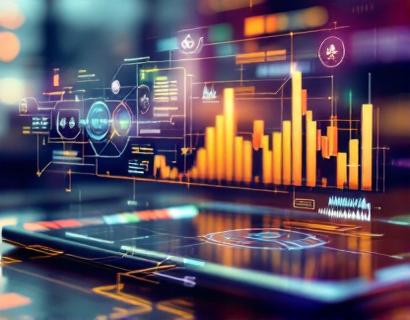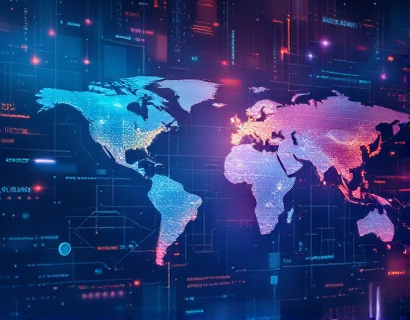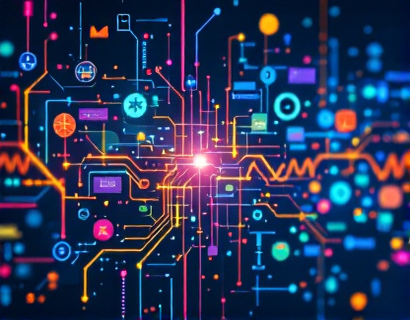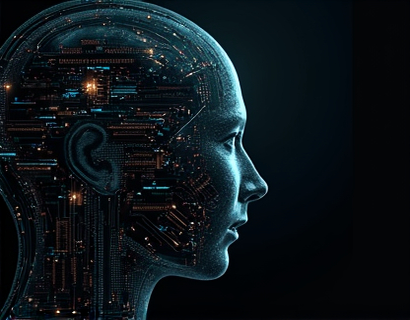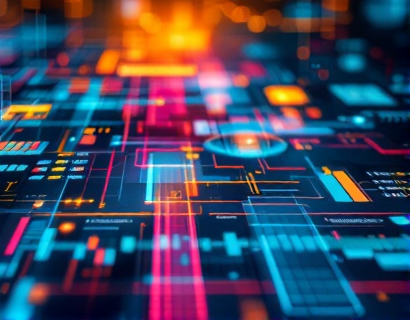Revolutionizing Digital Interactions: The Synergy of Crypto and AI
The intersection of cryptocurrency and artificial intelligence (AI) is ushering in a new era of digital innovation, fundamentally transforming user experiences and connectivity across various sectors. This synergy is not just about combining two advanced technologies but about creating a seamless, secure, and intelligent digital environment that enhances how users interact with technology. As we delve into this topic, we will explore the latest innovations that are redefining the tech landscape, offering valuable insights for tech enthusiasts and professionals alike.
Understanding the Basics: Cryptocurrency and AI
To fully appreciate the impact of merging cryptocurrency and AI, it's essential to understand the fundamentals of both technologies. Cryptocurrency, often referred to as digital or virtual currency, uses cryptography for security and operates on a decentralized network, typically a blockchain. This decentralized nature ensures transparency, security, and reduces the need for intermediaries such as banks.
Artificial intelligence, on the other hand, involves the simulation of human intelligence processes by machines, particularly computer systems. These processes include learning (the acquisition of information and rules for using it), reasoning (using rules to reach approximate or definite conclusions), and self-correction. AI can operate autonomously or be integrated into existing systems to enhance their functionality.
The combination of these two technologies creates a powerful toolset for developing advanced digital solutions. Cryptocurrency provides a secure and transparent medium for transactions, while AI brings intelligence and automation to these transactions, making them more efficient and user-friendly.
Enhancing Security with AI-Driven Crypto Solutions
One of the most significant benefits of merging cryptocurrency and AI is the enhancement of security measures. Traditional cryptocurrencies face challenges such as hacking, fraud, and unauthorized access. AI can mitigate these risks by implementing advanced security protocols and real-time monitoring systems.
For instance, machine learning algorithms can analyze patterns in transaction data to detect anomalies that may indicate fraudulent activity. These algorithms can adapt and learn from new data, continuously improving their ability to identify and prevent security breaches. Smart contracts, which are self-executing contracts with the terms directly written into code, can also benefit from AI. AI can ensure that the conditions of smart contracts are met accurately and securely, reducing the risk of errors or malicious activities.
Moreover, AI can enhance the user authentication process in cryptocurrency platforms. Biometric data, such as fingerprints or facial recognition, can be integrated with blockchain technology to provide a more secure and convenient way to verify user identities. This not only protects user assets but also streamlines the user experience by eliminating the need for complex password management.
Optimizing User Experiences through AI-Powered Interfaces
The integration of AI into cryptocurrency platforms is not limited to security; it also significantly improves user experiences. AI-driven interfaces can provide personalized and intuitive interactions, making complex crypto operations more accessible to a broader audience.
For example, AI-powered chatbots can assist users in navigating crypto platforms, answering common questions, and guiding them through transactions. These chatbots can understand natural language, providing a more human-like interaction. Additionally, AI can analyze user behavior and preferences to offer tailored recommendations, such as suggesting optimal times for trading based on market trends or recommending specific coins based on the user's investment goals.
Another area where AI shines is in user interface (UI) design. AI algorithms can analyze user interactions and feedback to optimize the UI, making it more user-friendly and efficient. This continuous improvement ensures that users have a seamless and enjoyable experience, which is crucial in a competitive market.
Decentralized Finance (DeFi) and AI: A Transformative Combination
Decentralized Finance (DeFi) is a rapidly growing sector within the cryptocurrency ecosystem, offering traditional financial services on blockchain networks. The combination of DeFi and AI is particularly transformative, as it can address some of the key challenges faced by DeFi platforms, such as liquidity management, risk assessment, and automated trading.
AI can enhance liquidity in DeFi by predicting market trends and optimizing liquidity pools. By analyzing historical data and real-time market conditions, AI algorithms can determine the best times to add or withdraw funds from liquidity pools, maximizing returns and minimizing risks. This not only improves the efficiency of DeFi platforms but also attracts more users by ensuring a more stable and reliable environment.
Risk assessment is another critical area where AI can make a significant impact. DeFi platforms often involve complex financial instruments and high-risk transactions. AI can analyze vast amounts of data to assess risks more accurately, providing users with better insights and helping platforms to implement more robust risk management strategies. This can lead to increased trust and adoption of DeFi services.
Automated trading, or algorithmic trading, is another domain where AI excels. AI-driven trading bots can execute trades based on predefined strategies, adapting to market conditions in real-time. These bots can operate 24/7, capitalizing on opportunities that human traders might miss. By integrating AI with DeFi, users can benefit from more efficient and profitable trading experiences.
Supply Chain Optimization with Crypto and AI
The supply chain industry is another sector that stands to gain significantly from the integration of cryptocurrency and AI. Traditional supply chains are often plagued by inefficiencies, lack of transparency, and high costs. Blockchain technology, combined with AI, can revolutionize supply chain management by providing a secure, transparent, and efficient system.
Blockchain can ensure the immutable and transparent recording of transactions throughout the supply chain, from production to delivery. This transparency helps in tracking the origin and movement of goods, reducing the risk of fraud and counterfeiting. AI can further enhance this by analyzing data from various sources, such as sensors and IoT devices, to optimize logistics and inventory management.
For example, AI can predict demand patterns and optimize inventory levels, reducing excess stock and minimizing waste. It can also identify bottlenecks in the supply chain and suggest improvements, such as rerouting shipments to avoid delays. This not only improves efficiency but also reduces costs, making the supply chain more sustainable and resilient.
Moreover, smart contracts can automate payment processes based on predefined conditions, ensuring that payments are made only when specific criteria are met. This reduces the need for intermediaries and speeds up the payment process, enhancing overall supply chain efficiency.
Enhancing Connectivity and Interoperability
One of the challenges in the cryptocurrency space is the lack of interoperability between different blockchain networks. This fragmentation can hinder the seamless flow of assets and information, limiting the potential of the crypto ecosystem. AI can play a crucial role in addressing this issue by developing solutions that enhance connectivity and interoperability.
AI-driven protocols can facilitate cross-chain transactions, allowing assets to move seamlessly between different blockchain networks. These protocols can analyze and optimize the most efficient pathways for transactions, reducing costs and increasing speed. Additionally, AI can help in standardizing data formats and protocols, making it easier for different blockchain systems to communicate and work together.
Interoperability is essential for the widespread adoption of blockchain technology, as it enables a more integrated and cohesive digital ecosystem. By leveraging AI, the crypto community can overcome the barriers of fragmentation and create a more unified and efficient system.
Conclusion: The Future of Digital Interactions
The convergence of cryptocurrency and AI is not just a technological advancement but a paradigm shift in how we interact with digital systems. By enhancing security, optimizing user experiences, transforming DeFi, optimizing supply chains, and improving connectivity, this synergy is paving the way for a more secure, efficient, and user-friendly digital world.
As the tech landscape continues to evolve, the potential for further innovations is immense. The integration of other emerging technologies, such as quantum computing and the Internet of Things (IoT), with cryptocurrency and AI can lead to even more groundbreaking developments. For tech enthusiasts and professionals, staying informed and engaged with these advancements is crucial to harnessing the full potential of this exciting frontier.



























